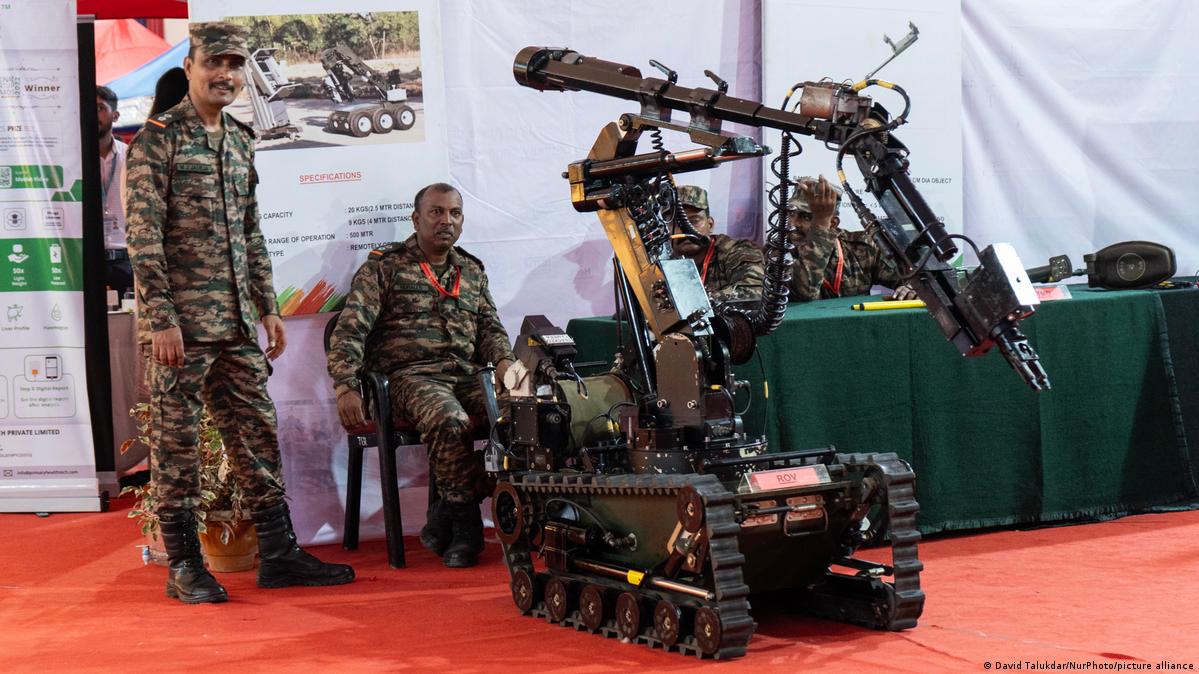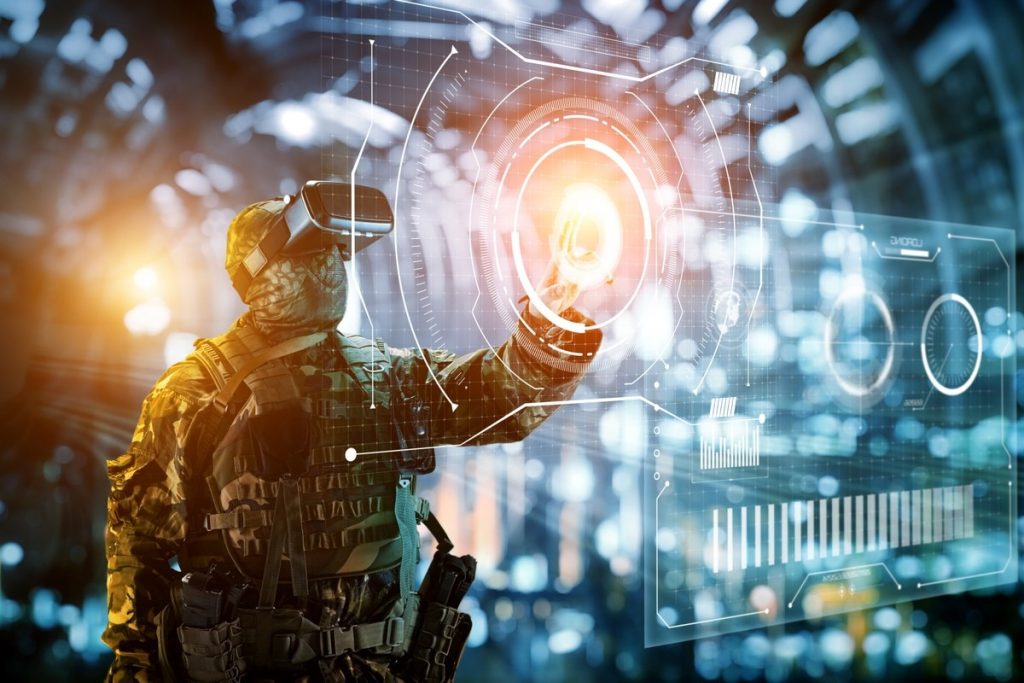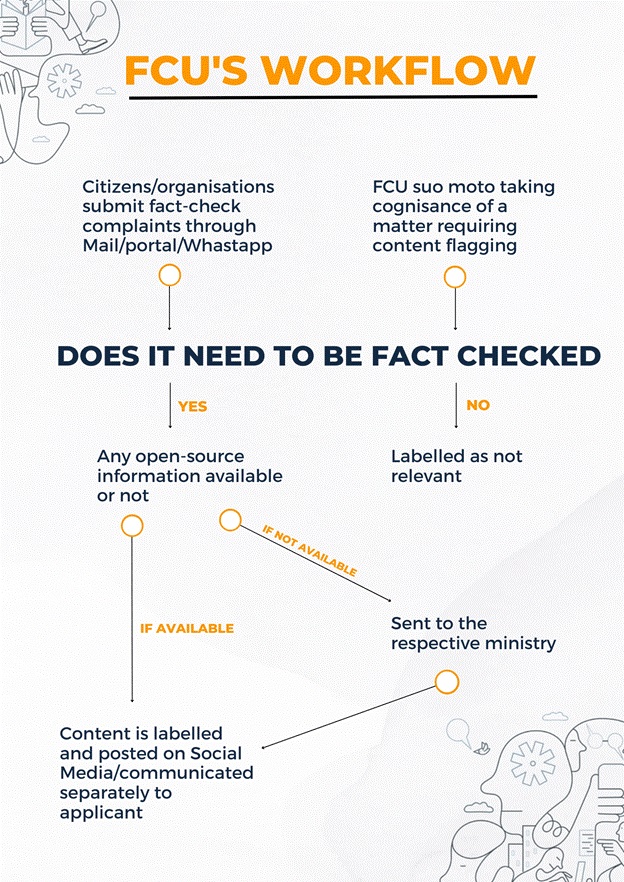Note4Students
From UPSC perspective, the following things are important :
Prelims level: National Pharmacy Commission Bill, 2023
Mains level: NA
Central Idea
- The Union Ministry of Health and Family Welfare has unveiled the draft National Pharmacy Commission Bill, 2023, signalling a transformative shift in India’s healthcare landscape.
- This bill aims to replace the Pharmacy Act, of 1948, and the existing Pharmacy Council of India (PCI) with the forward-looking National Pharmacy Commission.
Key Highlights of the Bill
- Elevating Pharmacy Education: The primary objective of the bill is to elevate pharmacy education by enhancing access to affordable, high-quality learning opportunities. It envisions a robust educational framework that prepares future pharmacy professionals to excel.
- Universal Access to Pharmacy Services: The bill aspires to make pharmacy services accessible to all, fostering equitable healthcare delivery across the nation.
- Integration of Research and Ethical Standards: It encourages pharmacy professionals to seamlessly integrate the latest research into their practice, contribute to ongoing research efforts, and uphold the highest ethical standards.
- Transparency and Adaptability: The bill advocates for regular, transparent assessments of pharmacy institutions, the establishment of a national pharmacy register, and the flexibility to adapt to evolving healthcare needs. It also introduces an effective grievance redressal mechanism.
National Pharmacy Commission’s Architecture
- A New Beginning: The bill proposes the establishment of the National Pharmacy Commission, headquartered in New Delhi, heralding the dissolution of the existing Pharmacy Council of India.
- Composition: The commission will consist of a Chairperson, 13 ex-officio members, and 14 part-time members.
- Three Key Boards: The Central Government will constitute three vital boards under the commission:
- Pharmacy Education Board
- Pharmacy Assessment and Rating Board
- Pharmacy Ethics and Registration Board
Empowering State Chapters
- The bill mandates every State Government to establish a state pharmacy chapter within one year from the Act’s commencement.
- These chapters will operate under State Law and play a pivotal role in executing the Act’s provisions.
- The Pharmacy Ethics and Registration Board will maintain the National Pharmacy Register (NPR), a comprehensive repository containing detailed information about pharmacy professionals, ensuring transparency and accountability.
Get an IAS/IPS ranker as your 1: 1 personal mentor for UPSC 2024
Attend Now
Note4Students
From UPSC perspective, the following things are important :
Prelims level: Gamma-ray bursts (GRBs)
Mains level: NA
Central Idea
- A Star’s Explosive End: About two billion years ago, far beyond our Milky Way galaxy, a huge star exploded into a supernova. This explosion sent out a massive burst of gamma rays, the most powerful type of energy wave in the electromagnetic spectrum.
- Gamma-Ray Bursts: These bursts are short-lived but incredibly intense, often associated with the most dramatic events in the universe, like the death of massive stars.
Why discuss this?
- These gamma rays travelled across space for billions of years, finally reaching Earth in 2022.
- When they arrived, they caused a significant disturbance in Earth’s ionosphere, a layer of electrically charged gases high in our atmosphere.
What are Gamma-Ray Bursts?
- What Are They? Gamma-ray bursts (GRBs) are incredibly intense flashes of gamma rays, which are the most energetic form of light in the electromagnetic spectrum. These bursts are the most powerful explosions observed in the universe.
- How They Occur: They usually happen when massive stars collapse into neutron stars or black holes, or during the merger of neutron stars. These cosmic catastrophes release a tremendous amount of energy.
- Duration and Energy: GRBs can last from a few milliseconds to several hours, but they typically last a few seconds. The amount of energy released in this short time can be more than the Sun will emit in its entire 10-billion-year lifetime.
- Afterglow: Following the initial burst, GRBs are often followed by an ‘afterglow’ emitted at longer wavelengths (X-ray, ultraviolet, optical, infrared, and radio).
Earthly Consequences and Research
- Lasting Effects: The gamma rays disturbed the ionosphere for several hours and even set off lightning detectors in India.
- Scientific Importance: Although this burst didn’t harm life on Earth, it showed how sensitive our ionosphere is to space events.
- A Rare Event: Such a powerful gamma-ray burst is expected to hit Earth only once every 10,000 years.
Looking Ahead: Protecting Earth from Cosmic Threats
- Preparing for Future Events: Scientists are studying the potential risks of a similar event happening closer to Earth, within our own Milky Way.
- Low Risk: However, the chance of such a dangerous event happening is very low.
Get an IAS/IPS ranker as your 1: 1 personal mentor for UPSC 2024
Attend Now
Note4Students
From UPSC perspective, the following things are important :
Prelims level: China-Myanmar Economic Corridor
Mains level: Belt and Road Initiative

Central Idea
- In a significant move towards expanding the Belt and Road Initiative (BRI) in South Asia, China has expressed its commitment to prioritize the extension of the China-Myanmar Economic Corridor (CMEC) to Sri Lanka.
What is CMEC?
|
Details |
| Geographical Scope |
Connects China’s Yunnan Province with Mandalay, Kyaukphyu SEZ on the Bay of Bengal, and Yangon in Myanmar. |
| Strategic Importance |
Provides China an alternative to the Strait of Malacca for trade and energy transport. Offers a shorter, more secure route to the Middle East and Africa. |
| Infrastructure |
Involves building roads, railways, ports, and industrial zones. Key projects include the development of the Kyaukphyu deep-sea port. |
| Economic Impact on Myanmar |
Promises infrastructure development, foreign investment, and job creation in Myanmar. Raises concerns about debt sustainability, environmental impact, and displacement of local communities. |
| Political and Security Challenges |
The corridor passes through politically sensitive and conflict-prone areas in Myanmar, posing challenges to its implementation and stability. |
Expanding the Economic Corridor
- China’s Strategic Priority: State Councillor Shen Yiqin emphasized that China is making the extension of the CMEC to Sri Lanka a strategic priority.
- Free Trade Agreement Acceleration: Both nations affirmed their commitment to expediting the implementation of the China-Sri Lanka Free Trade Agreement, reinforcing their economic partnership.
Significance of CMEC in BRI
- CMEC’s Emergence: CMEC is the latest addition to the six land corridors within the Belt and Road Initiative, gaining prominence over the stalled Bangladesh-China India Myanmar (BCIM) corridor.
- South Asian Perspective: India and Bhutan remain outside the BRI framework, while countries like Sri Lanka are enthusiastic participants, poised for a more substantial economic contribution in the second phase of the initiative.
Get an IAS/IPS ranker as your 1: 1 personal mentor for UPSC 2024
Attend Now
Note4Students
From UPSC perspective, the following things are important :
Prelims level: Langlands Program
Mains level: Not Much
Central Idea
- Robert Langlands, a mathematician famous for his “Langlands Program,” has shifted his focus to Turkish literature in his later years.
- This program is about finding deep links between two areas of math: number theory (the study of numbers) and harmonic analysis (a type of math that breaks down functions or signals into simpler parts).
Langlands Program: A Journey to Connect Different Math Areas
- Beginning: In 1967, Robert Langlands, a young mathematician at Princeton, started this journey with a letter to another mathematician, Andre Weil, sharing some groundbreaking ideas.
- Complex Ideas: The program is full of complicated ideas that are hard for even experts to fully understand.
- Goal: It aims to connect number theory and harmonic analysis, two areas of math that don’t seem related at first.
The Purpose of the Program
- Abel’s Discovery: In 1824, Niels Henrik Abel showed that it’s impossible to find a one-size-fits-all solution for certain math equations (polynomial equations) beyond a certain complexity.
- Galois’s Approach: Evariste Galois, who didn’t know about Abel’s work, suggested looking at patterns (symmetries) in the solutions of these equations instead of trying to solve them directly.
- Galois Groups: These are groups that show the patterns in the solutions of these equations and are key to the Langlands Program.
- Linking Ideas: The program tries to connect these Galois groups with something called automorphic functions, which would allow using calculus (a branch of math) to explore these equations, connecting harmonic analysis and number theory.
Automorphic Functions: Connecting Different Areas of Math
- Example of Automorphic Function: Think of functions that have a repeating pattern, like the way sine functions in trigonometry work.
- Special Symmetry: Automorphic functions have a unique property where they remain the same even after certain transformations, showing a special kind of symmetry.
- Role in Langlands Program: The program’s goal is to link these special functions with Galois groups, leading to new ways of understanding and solving math problems.
Impact of the Program
- Solving an Old Puzzle: In 1994, Andrew Wiles and Richard Taylor used ideas from the Langlands Program to solve Fermat’s Last Theorem, a famous and old math problem.
- Creating New Functions: This program helps in making new types of automorphic functions, which could help solve other complex math problems, like the Ramanujan conjectures.
- Geometric Langlands: This is a branch of the Langlands Program that looks at connections between different fields like algebraic geometry, representation theory, and even physics.
- Math and Physics Connection: Recent studies suggest that this program might help in understanding things in physics, like the study of electromagnetic waves.
Get an IAS/IPS ranker as your 1: 1 personal mentor for UPSC 2024
Attend Now
Note4Students
From UPSC perspective, the following things are important :
Prelims level: Article 200
Mains level: Read the attached story
Central Idea
- The Supreme Court has taken notice of the Tamil Nadu government’s assertion that Governor R.N. Ravi lacks the “discretion” to withhold approval for the ten Bills “re-passed” by the State Legislative Assembly.
- This legal matter revolves around the interpretation of Article 200 of the Constitution, which governs the Governor’s role in granting assent to Bills passed by the State Legislature.
Article 200 of the Indian Constitution
- It pertains to the “Assent to Bills.”
- It outlines the procedure for the Governor of a state in India to give their assent to bills passed by the state legislature.
- Article 200 states that when a bill is passed by the legislative assembly of a state (or in the case of a bicameral legislature, by the legislative assembly and legislative council), it shall be presented to the Governor for their assent.
Governor’s Discretion: The Governor has the discretion to either:
- Give their assent to the bill, after which it becomes a law.
- Withhold their assent to the bill, in which case the bill does not become law.
- Return the bill (if it is not a money bill) to the legislature with a request for reconsideration, along with a specific message explaining the reasons for withholding assent.
Reconsideration by the Legislature: If the Governor returns a bill for reconsideration, the legislature can then reconsider the bill, taking into account the Governor’s message. They may choose to make amendments to the bill or pass it again without any changes.
Assent after Reconsideration: If the bill is passed again by the legislature, with or without amendments, and is presented to the Governor, the Governor is bound to give their assent to it. In other words, the Governor cannot withhold assent a second time. |
Governor’s Discretion
- Article 200 Interpretation: The Tamil Nadu government argued that once Bills have been re-passed by the Assembly, they are treated similarly to Money Bills and cannot be rejected by the Governor.
- Questioning the Process: The CJI questioned whether the Governor must send the Bills back to the Assembly for reconsideration after withholding assent.
- Limiting Presidential Referral: The State also emphasized that the Governor cannot refer the reiterated Bills to the President after withholding assent.
Background and Delay
- Delayed Bills: The Bills in question were sent to the Governor’s office between January 2020 and April 2023, and the State accused the Governor of holding them indefinitely.
- Special Session: The TN Assembly convened a special session to re-pass the Bills after the Governor withheld assent.
- Governor’s Statement: The Governor returned the Bills with a simple statement: “I withhold consent,” prompting the Assembly to take action.
Legal Perspectives
- Governor’s Ceremonial Role: The State contends that the Governor’s role is primarily ceremonial and that he must act within the State Legislature’s framework.
- Will of the People: The Bills passed by the Assembly represent the will of the people and should not be delayed or rejected without valid reasons.
Supreme Court’s Response
- Addressing Delay: The Supreme Court acknowledged the need to address whether there has been a delay in the Governor’s constitutional function.
- Bill Status: The Attorney General mentioned that 182 Bills were presented to the Governor, with 152 approved, five withdrawn, and nine reserved for referral to the President.
- Key Issue: The real issue in this case involves amendments to State universities’ legislations that affect the Governor’s powers to select Vice-Chancellors.
Conclusion
- The Supreme Court’s hearing on this matter raises critical questions about the Governor’s role in granting assent to Bills and the need to ensure timely decision-making in the best interest of the people and governance of the State.
- The interpretation of Article 200 of the Constitution will play a pivotal role in this legal dispute.
Get an IAS/IPS ranker as your 1: 1 personal mentor for UPSC 2024
Attend Now
Note4Students
From UPSC perspective, the following things are important :
Prelims level: governor topic
Mains level: accountability and balance to the role of governors

Central idea
The article delves into the persistent constitutional challenges posed by the role of governors in India, emphasizing historical debates, predicting issues realized over time, and proposing judicial and constitutional solutions for effective governance and accountability.
Key Highlights:
- Governor’s Constitutional Role: The article highlights the constitutional concerns regarding the role of governors in Indian states, emphasizing their appointed nature and potential overreach in state matters.
- Recent Instances in Tamil Nadu: Specific instances in Tamil Nadu, where Governor R N Ravi returned bills for assent and delayed decisions, serve as examples of the ongoing issues related to gubernatorial powers.
- Constitutional Design Critique: The piece delves into the historical debates in the Constituent Assembly, expressing concerns raised by members like Dakshayani Velayudhan about the replication of colonial structures and the centralized nature of power.
- Unaddressed Predictions: The article points out that predictions made during the Constituent Assembly debates about potential misuse of gubernatorial powers have materialized, with governors often serving as agents of the Union government.
Challenges:
- Appointment and Removal Disparities: It highlights the disparities between the appointment and removal processes of the President and the Governor, suggesting a lack of checks and balances for governors’ actions.
- Perverse Incentives: The piece discusses the perverse incentives for governors, as they are secure in their positions as long as they align with the Union government, potentially leading to undue interference in state affairs.
Key Phrases:
- Colonial Legacy of Governors: The article stresses the continuation of the colonial institution of governors, raising questions about its relevance in an independent India.
- Powers and Accountability: It explores the imbalance in powers and accountability between the President and the Governor, pointing out the governor’s vulnerability to the Union government’s preferences.
Analysis:
- Judicial Intervention: The piece acknowledges the increasing judicial intervention to address governors’ conduct but questions the need for repeated court interventions and calls for a more sustainable solution.
- Constitutional Reform Proposal: While presenting a constitutional reform proposal from “Heads Held High,” the article suggests making governors accountable to state legislatures through election and impeachment, mirroring the President’s accountability to the Union Parliament.
Way Forward:
- Viable Alternatives: Instead of outright abolition, the article advocates for viable alternatives such as judicial scrutiny and comprehensive constitutional reforms to bring accountability and balance to the role of governors.
- State Legislature Accountability: Proposing a way forward, the article suggests a model where governors are made accountable to state legislatures through election and impeachment, akin to the President’s accountability at the national level.
Get an IAS/IPS ranker as your 1: 1 personal mentor for UPSC 2024
Attend Now
Note4Students
From UPSC perspective, the following things are important :
Prelims level: GSAT-7 and GSAT-7A
Mains level: emerging technologies in the military landscape

Central idea
The Indian military’s strategic embrace of emerging technologies, encompassing AI, cyber, and unmanned systems, reflects a forward-looking vision. While showcasing diverse initiatives, the article underscores the need for organizational shifts, jointness, and collaboration with civilians to effectively integrate these technologies
Key Highlights:
- Diverse Initiatives: Indian military strategically adopts AI, cyber, and unmanned systems, with each service branch leading initiatives.
- Strategic Vision: Reflects a forward-looking approach, leveraging technology for operational and strategic advantages.
- AIDef Showcases: Defence Ministry’s ‘AIDef’ presents Defence AI Council and Project Agency, showcasing a commitment to integrate AI across allied organizations.
- Indigenous Emphasis: Highlights a push for indigenization, aligning with national goals of self-reliance in defence.
Challenges:
- Organizational Shift Needed: Warns against viewing technology as a ‘plug and play,’ stressing the need for organizational and doctrinal changes.
- Data-sharing Imperative: Advocates for a cultural shift, urging military to share data with civilians for technology to reach its full potential.
- Crucial Interconnectedness: Identifies jointness and interoperability challenges, crucial for effective integration of emerging technologies.
- Need for Unified Commands: Stresses the urgency of joint theatre commands to streamline operations and enhance coordination.
Key Phrases:
- Civil-Military Partnerships: Emphasizes collaborative defence, necessitating partnerships with scientists, academics, and technologists.
- Shared Responsibility: Highlights the shared responsibility of the military and civilians in navigating the complexities of emerging technologies.
- Historical Challenge: Explores the perpetual military challenge of adapting to change, underlining the complexity of integrating emerging technologies.
- Strategic Evolution: Recognizes the need for a strategic evolution to effectively incorporate emerging technologies into military operations.

Analysis:
- Operational Synergy: Advocates for joint theatre commands to achieve operational synergy and seamless integration of emerging technologies.
- Unified Strategy: Stresses the importance of a unified strategy for joint operations, minimizing challenges related to technology integration.
- Specialization Advocacy: Urges a shift towards specialization in human resources practices, aligning officer expertise with the demands of emerging technologies.
- Intellectual Inclination: Recommends extended tenures for officers inclined towards technological domains, fostering intellectual capabilities.
| Value addition box from Civilsdaily
The U.S. Department of Defense (DoD) actively engages with private tech companies through initiatives like the Defense Innovation Unit (DIU) and In-Q-Tel to leverage cutting-edge technologies.
The U.S. prioritizes collaboration between defense agencies and civilian entities, exemplified by the establishment of the Defense Innovation Board, composed of experts from various industries.
The U.S. military emphasizes jointness through unified combatant commands, promoting interoperability in the application of emerging technologies across different branches. |
Key Data:
- ‘UDAAN’ Initiative: The Indian Air Force is utilizing AI, cyber, and virtual reality under ‘UDAAN’ to address operational, logistical, and training needs.
- Integrated Unmanned Roadmap: The Navy is progressing with emerging technologies, including an Integrated Unmanned Roadmap, as part of project ‘Swavlamban.’
- Defence Cyber Agency: Established in 2018, the Defence Cyber Agency addresses threats in the cyber domain.
- Defence Space Agency: Launched in 2018, it focuses on threats and capabilities related to space.
- Comprehensive Approach: Reveals the military’s comprehensive approach, identifying 45 niche technologies for diverse military applications.
- Strategic Preparedness: Illustrates a strategic preparedness to harness a spectrum of technologies for operational superiority.
- Communication Enhancements: Mentions GSAT-7 and GSAT-7A launches, highlighting advancements in military communication capabilities through satellite technology.
- Space for Defence: Showcases India’s utilization of space capabilities for defence purposes, marking a significant leap in technological applications.
Way Forward:
- Integrated Planning: Calls for integrated planning to address challenges in jointness and interoperability, laying the groundwork for successful technology integration.
- Cross-Service Collaboration: Advocates for cross-service collaboration, emphasizing the need for unified efforts to maximize the potential of emerging technologies.
- Private Sector Integration: Recommends openness to technocrats from the private sector, fostering innovation and expertise infusion for defence.
- Innovation Ecosystem: Calls for the creation of an innovation ecosystem, encouraging collaboration between defence and civilian talent for holistic technological advancements.
This transformative journey requires a multi-faceted approach, encompassing strategic vision, organizational adaptability, collaborative partnerships, and talent infusion to fully realize the potential of emerging technologies in the military landscape.
Get an IAS/IPS ranker as your 1: 1 personal mentor for UPSC 2024
Attend Now
Note4Students
From UPSC perspective, the following things are important :
Mains level: freedom of speech
)
Central idea
The article critically examines the Government of Tamil Nadu’s establishment of a Fact Check Unit, highlighting constitutional concerns, the potential impact on freedom of speech, and the challenges posed by ambiguity and absence of due process.
What is fact check unit?
A Fact Check Unit is an entity or organization tasked with verifying the authenticity and accuracy of information, particularly in the context of news, announcements, policies, schemes, guidelines, and initiatives of a government or other institutions.
Key Highlights:
- Establishment of Tamil Nadu Fact Check Unit: The Government of Tamil Nadu issues an order to create a Fact Check Unit for verifying information related to the state government across diverse media platforms.
- Constitutional Concerns Raised: Assertions about the order violating fundamental rights and being constitutionally vague and arbitrary, particularly emphasizing the potential infringement on freedom of speech.
- Impact on Freedom of Speech: Examining the implications of the Fact Check Unit on freedom of speech and expression, highlighting the need for reasonable restrictions and challenging the authority of a Government Order in imposing such restrictions.
- Chilling Effect Analysis: A deeper analysis of the perceived chilling effect on freedom of speech, exploring the implications of the Government acting as the arbiter of information authenticity.

Challenges:
- Scope Ambiguity and Potential Misuse: Critiques the lack of specificity in defining “information related to the Government of Tamil Nadu,” raising concerns about ambiguity and the possibility of misuse.
- Due Process Absence: Points out the absence of due process, where the Fact Check Unit lacks a mechanism for the author’s hearing, positioning the government as the sole determinant of information authenticity.
- Legal Limitations on Government Orders: Discusses the legal limitations of Government Orders in imposing restrictions on freedom of speech, underscoring the need for a more nuanced and legislative approach.
- Global Challenges of Misinformation: Draws parallels with global challenges of misinformation, citing events like the U.S. presidential election, and underscores the necessity for effective measures in addressing this widespread issue.
Key Phrases for enhancing answer quality:
- “Chilling effect on freedom of speech”
- “Unconstitutionally vague and arbitrary”
- “Opportunity of hearing”
- “Mis/disinformation and fake news challenge”
- “Government as judge, jury, and executioner”
Analysis:
- Constitutional Implications Explored: In-depth analysis of the constitutional concerns, with a focus on how the Fact Check Unit might impact freedom of speech and questioning the legal standing of a Government Order.
- Interrogation of Scope Ambiguity: Scrutiny of the ambiguity surrounding the definition of “information related to the Government of Tamil Nadu,” delving into potential implications for various forms of expression.
Key Facts:
- US Election and Misinformation Parallel: Drawing parallels with global challenges of misinformation during events like the U.S. presidential election, emphasizing the need for effective measures.
Way Forward:
- Stakeholder Consultation Advocacy: Advocacy for comprehensive consultations with stakeholders, including the public and intermediaries, to develop effective measures against misinformation.
- Global Best Practices Exploration: Encouraging exploration of global best practices, such as the European Commission’s Code of Practice on Disinformation, for a more inclusive and well-informed approach.
- Media Literacy Promotion Recommendation: Recommending the promotion of media literacy and support for an independent network of fact-checkers as constructive measures to combat misinformation.
Get an IAS/IPS ranker as your 1: 1 personal mentor for UPSC 2024
Attend Now





)
